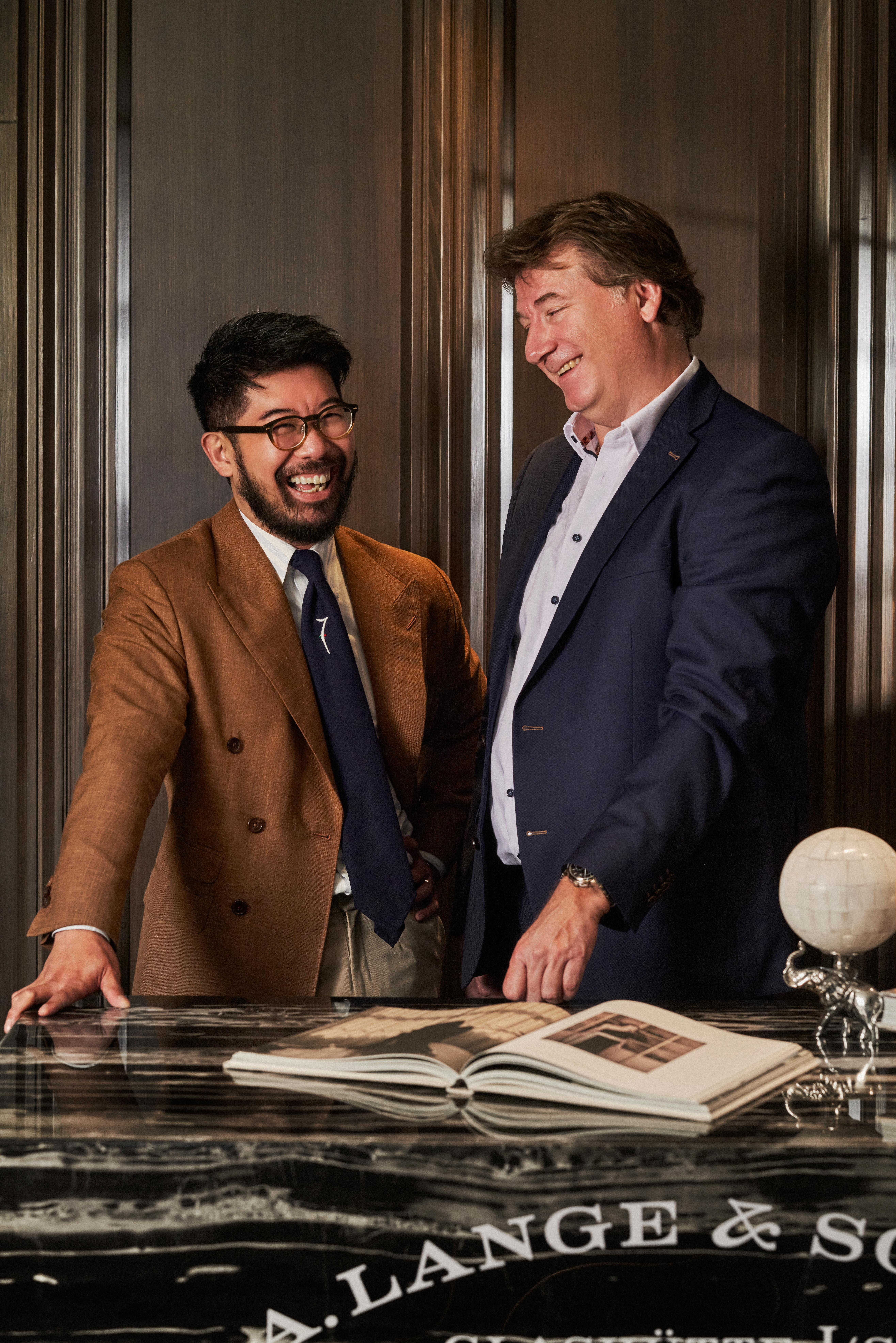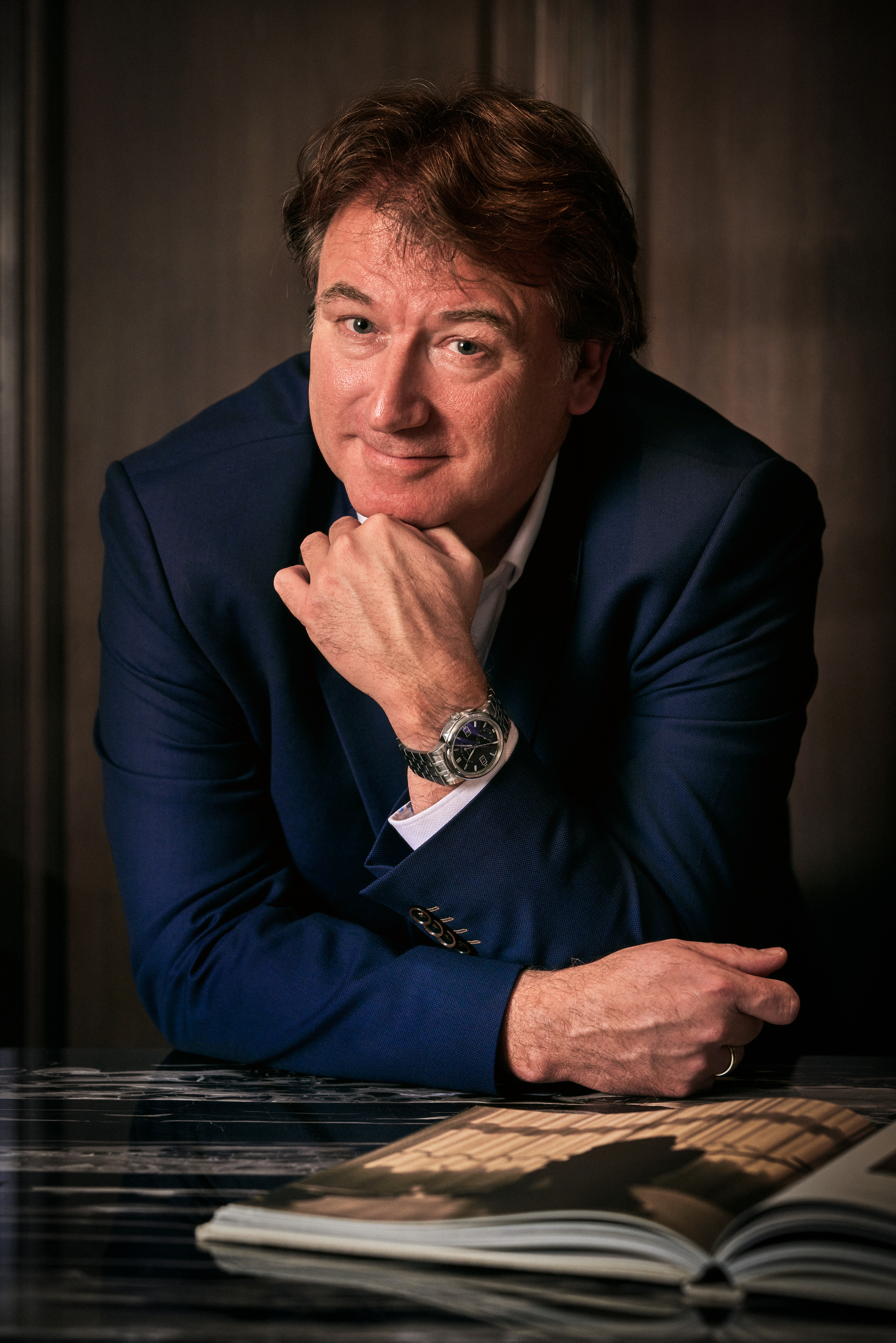
A. Lange & Söhne has always been the brand that appeals to the geekiest of watch geeks (myself included). Not a surprising fact considering they spend most of their efforts under the hood where it matters, with a strong focus on movement decoration and mechanical perfection. The brand was first founded in 1845 by Ferdinand Adolph Lange in Glashütte Germany, up until it was nationalised and left defunct following the end of the Second World War. It was eventually revived in 1990 by its founder’s great-grandson, Walter Lange.
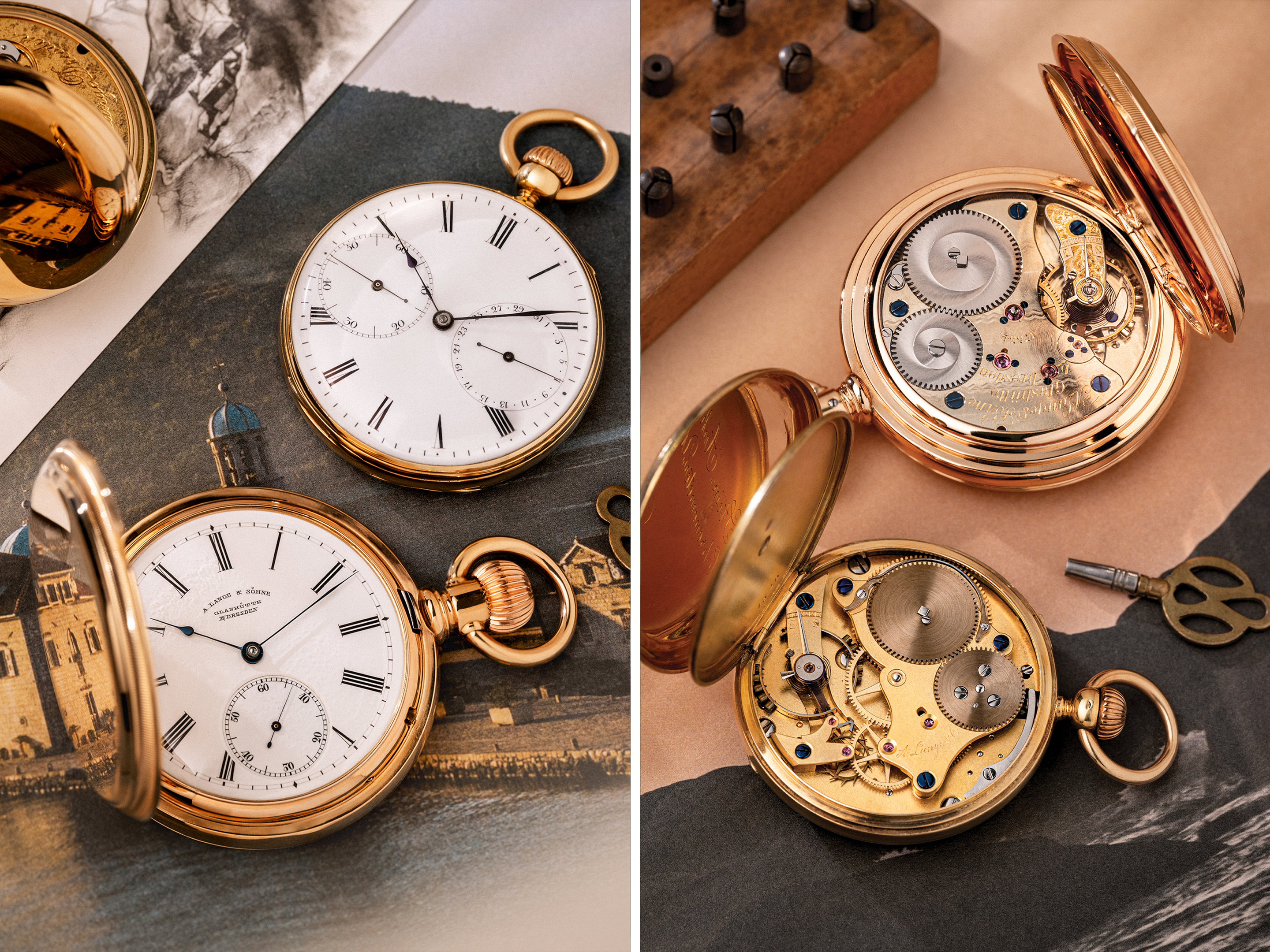
A pair of A. Lange & Söhne pocket watches from before its nationalisation.
In the 30 years since their revival collection of 1994, Lange had carved its place in the watchmaking world as a specialist in exceptional complicated movements. Their iconic works include the handsome Lange 1, the highly acclaimed Datograph, and the ground-breaking Zeitwerk. At the heart of it all is Anthony de Haas, Director of Product Development. This year he celebrates two decades of innovative watchmaking at the Saxon manufacture.
We met with Anthony in Bangkok to pick his brain on the unconventional watchmaking approach that has made Lange the alluring powerhouse it is today.
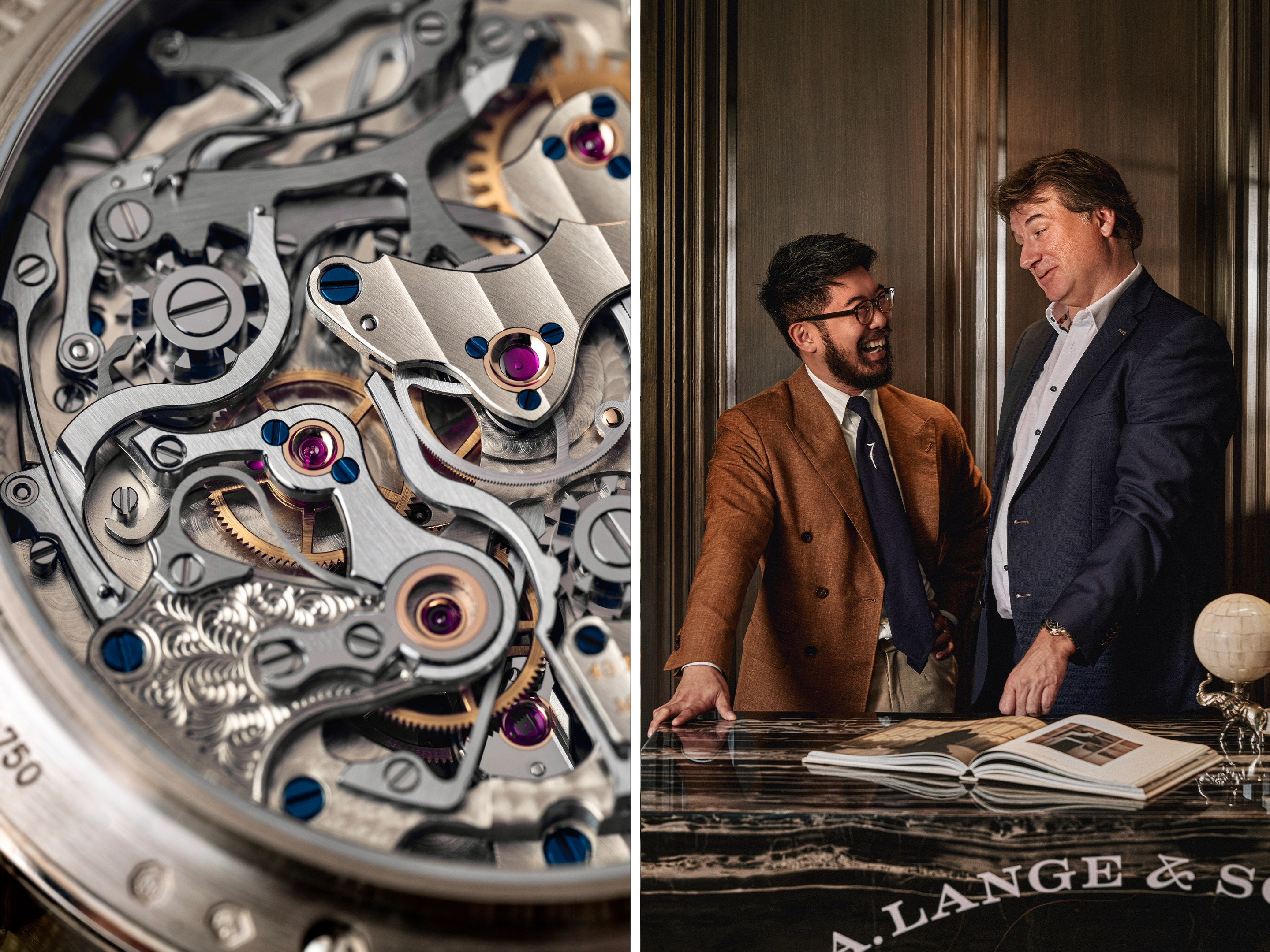
Tom: What is the philosophy behind A. Lange & Söhne that makes it unique you think?
Tony: First and foremost we are watchmakers, from Germany. When Günter Blümlein and Walter Lange revived the brand in 1990, they knew that they only had one chance. That was before my time at Lange but they always said to the team: “Guys, we have to have an input of 200%, to achieve the 100%. Because we are not Swiss-made. We are forced to do, we are forced to think, differently.” That was also a very interesting challenge for us because it was a blank paper at its beginning. A fresh start. We still have that spirit today, it is how we think and we focus on watchmaking. That is also the reason why I am at Lange where we can play! It is almost like being an independent watchmaker, we have no boundaries that constrain us.
Tom: It does feel like Lange is an independent brand, backed by a conglomerate (Richemont), that’s allowed to operate and run autonomously.
Tony: Absolutely!
Tom: What do you think is the key defining factor between German watchmaking and Swiss watchmaking?
Tony: German design typically has a more symmetrical direction. But symmetry doesn’t always have to be blatant, sometimes it’s hidden within the details. I know for a fact that Blümlein always focused on the details, and quite frankly that man is a genius. Let’s take the iconic Lange 1, for example. It’s a watch with a de-centred dial in a round case. That fact on its own is nothing new. But finding a certain symmetry, well not a certain symmetry but the perfect symmetry, that defines the Lange 1! You have the main dial, oversized date, and power reserve indication, laid out with the Golden Ratio to achieve harmony. You can have a de-centred dial with axes popping up everywhere all over the place, and that wouldn’t achieve the same harmonious result. There has to be symmetry and harmony. While at first glance the Lange 1 has an asymmetrical dial design, the balance of its details achieves a balance that makes it beautiful.
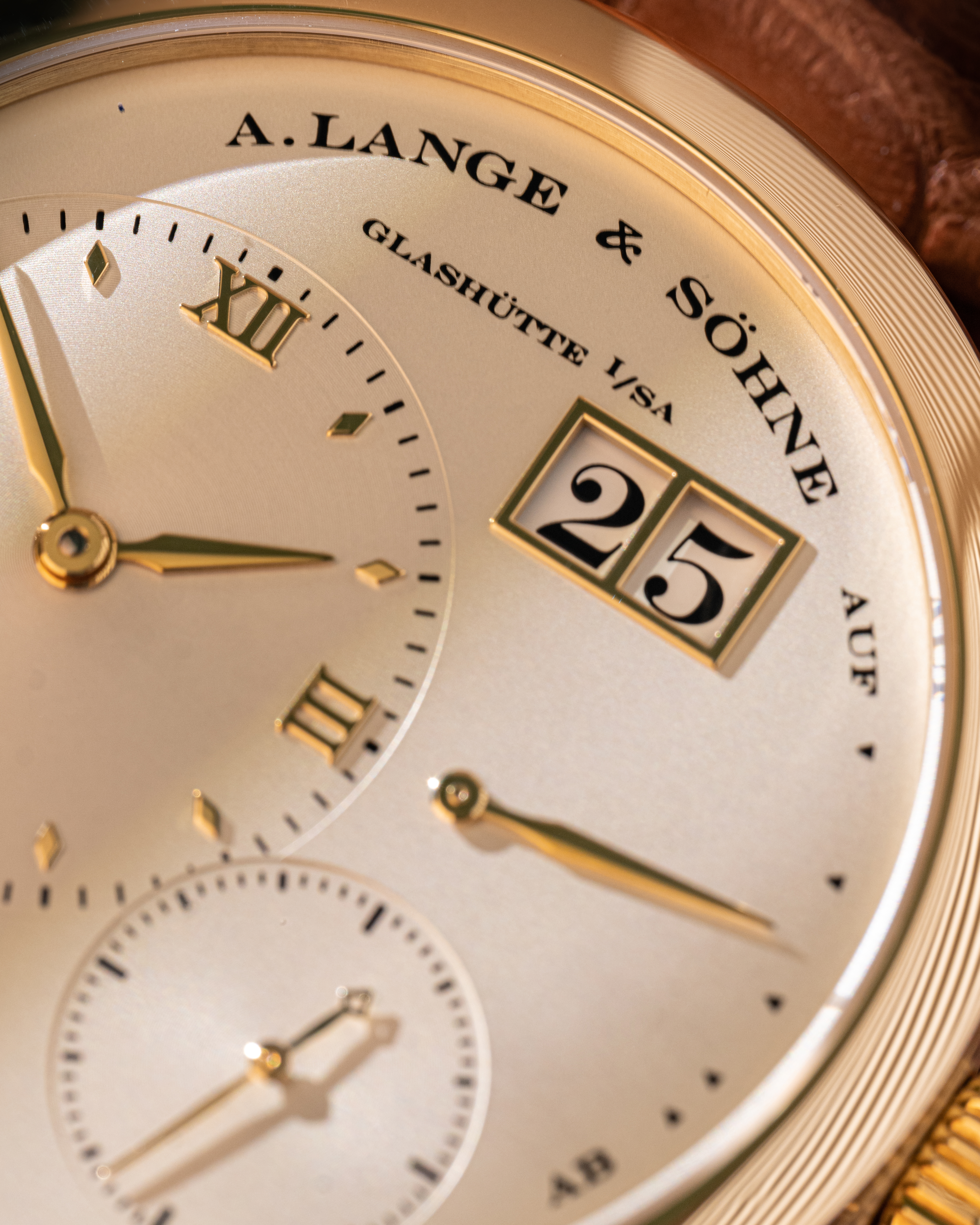
The asymmetrical balance of the Lange 1.
Tom: How do you strike a balance between tradition and modernity?
Tony: I am in my 20th year at Lange and I think that’s how we’ve been trained to think. We don’t forcefully try to inject tradition into our modern timepieces. We take a lot of time to fine-tune our movements that must not only work well but also evoke joy and be laid out with our signature aesthetics. Of course, we’re inspired by forms and shapes of traditional watchmaking, combined with the modern touches of the present day. The result has to be harmonious, and that can only be accomplished when our product development and technical teams mingle in a meaningful way, hand-in-hand.
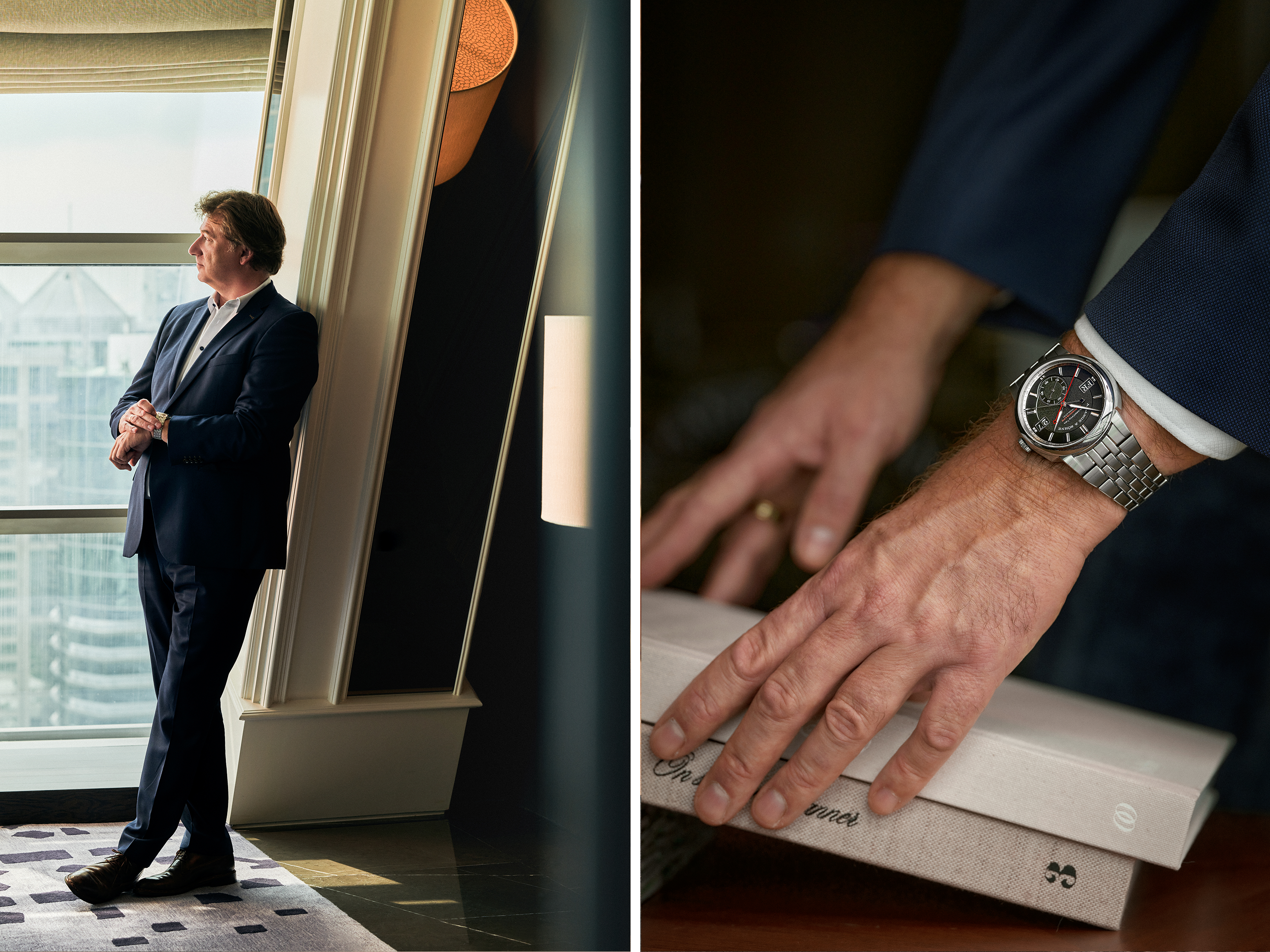
De Haas with the 2023 Odysseus Chronograph.
Tom: Do you have a favourite complication?
Tony: In my past life I specialised in chiming watches. Repeaters and Grande Sonneries, are really special works of art. At Renaud et Papi (present day Audemars Piguet Le Locle) I had the opportunity to prototype a Grande Sonnerie watch and that gives a completely new dimension to enjoying a watch. With time-only pieces, it’s quite straightforward with not much user interaction. With the chronographs, you can play with them; start, stop, and reset – cool. But when you wear a Grande Sonnerie watch, even when you’re just sitting there with it doing nothing, you’re having an interaction with it. At the start of a new hour, the watch goes off and chimes the time autonomously like a clock tower, and that is truly amazing. Very, VERY complicated, and that’s the allure of it. So no secret, the Grande Sonnerie has to be my favourite complication.
Tom: I’m a huge fan of the Grande Sonnerie complication myself and I think there’s a tinge of irony in it that makes it interesting. Centuries ago, portable timekeepers were not commonplace at all. Most people did not even have clocks at home! People relied on clock towers to tell the passage of time and get on their days. While the face of the clock displayed the time, it wasn’t always visible to most people so they counted on the audible chimes to discern the time. That was the most efficient way for time to be disseminated to an entire city. While wristwatches became the norm in the middle of the 20th century, it wasn’t until 1992 that we saw the successful miniaturisation of a clock tower onto the wrist! Time has at this point become democratised with quartz and digital advancements, but watchmaking has never stopped innovating to achieve what had been impossible centuries ago.
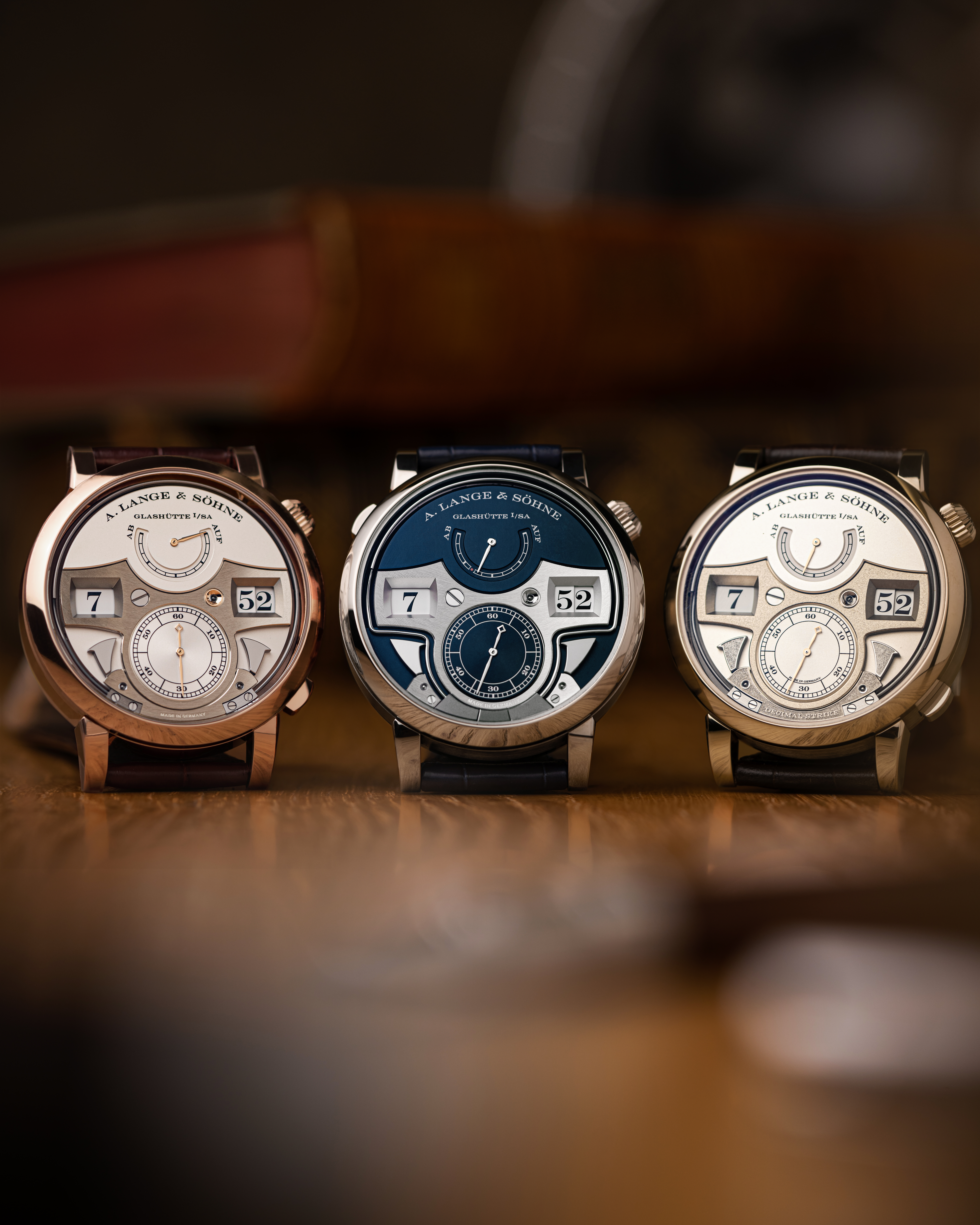
Chiming Zeitwerks – Telling the time with hands, hammers, discs, and gongs.
Tony: That’s the same thing as having a Tourbillon in a wristwatch. That mechanism was first invented to improve the accuracy of pocket watches that mainly sat in one upright position. But it is always the craftsmanship that is precious and the joy they bring to their wearers. How many people today use mechanical chronographs to time real-life events? It’s completely beside the point, isn’t it? Today we all have cell phones, you buy one and you get the time for free. While very useful, they lack the beauty and emotion of a well-made mechanical complication watch. That is the essence of horology.
Tom: You have with you today the Zeitwerk Minute Repeater, which is a decimal repeater. With a standard minute repeater a low note chimes the hours, a high note chimes the minutes and the quarters are denoted with double notes. Because the Zeitwerk is a mechanical watch interpreted digitally, there are no quarters per se. So double notes instead convey the tens of the minutes. What I find to be most fascinating is that upon activation of the minute repeater slider, the digital display freezes until after the chiming sequence is completed before it jumps to a new minute. That to me is a sight to behold! A remarkably clever approach in the pursuit of mechanical perfection.

Zeitwerk Minute Repeater in Honey Gold
Tony: The original Zeitwerk jumps into a new minute when the second hand hits 60, that’s how we meant it to be. But with the Zeitwerk Minute Repeater, we discovered we had a problem on our hands. For example, 12:59 takes about 20~21 seconds to complete its chiming sequence. When we activated the first prototype with less than that amount of time to a new minute, the chimes would not match up to the digital display because the watch would begin chiming 12:59 while the digital display would read 1:00. So we had to build in a delay for the jump. While the watch continues to tick on and the second hand advances the digital display freezes temporarily until the chiming sequence is completed. The timekeeping component is not influenced, but the digital display jumps instantaneously as the final note of the repeater strikes. We know our timepieces are expensive and we are dedicated to making sure they work perfectly.
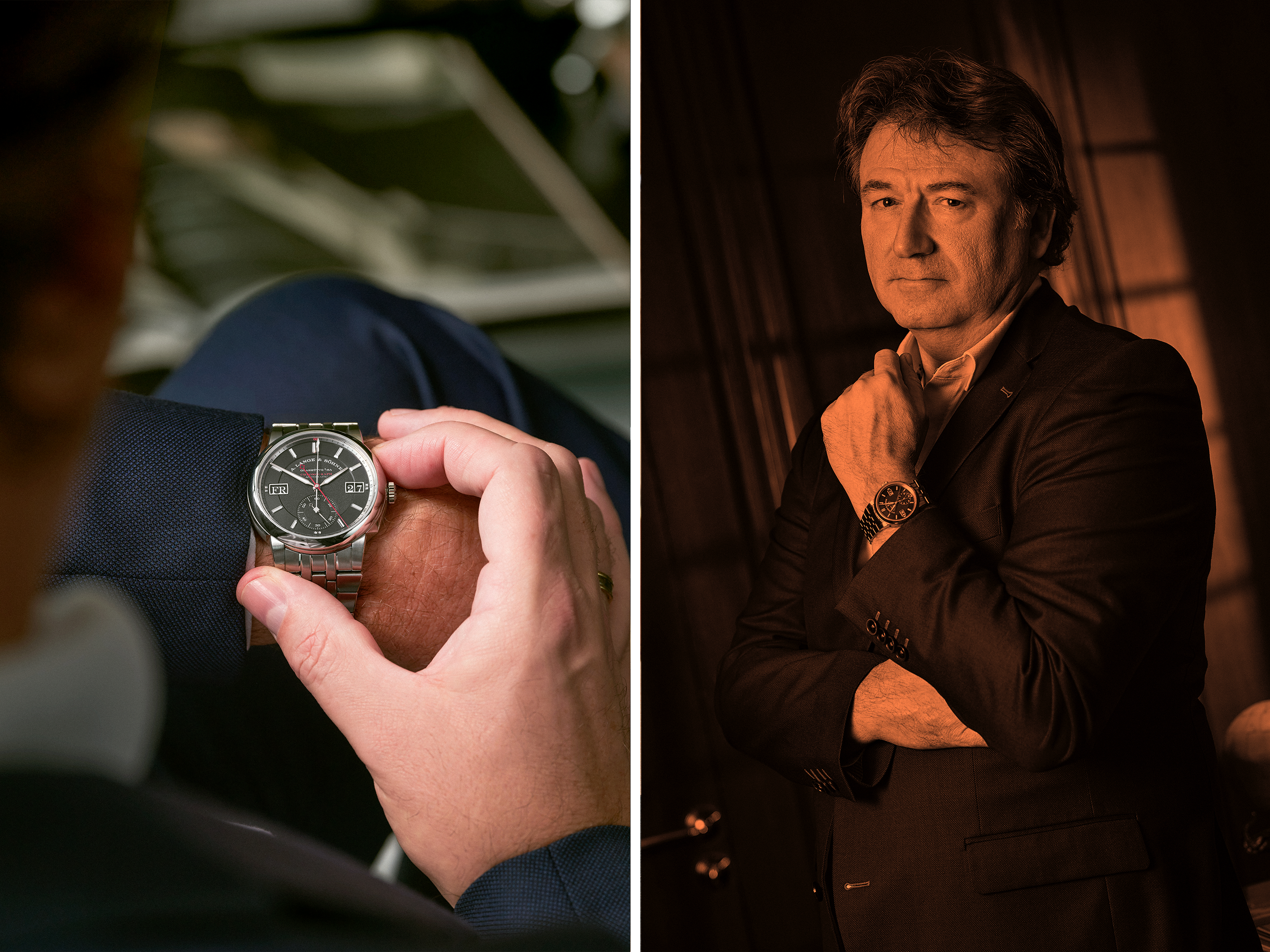
De Haas with the 2023 Odysseus Chronograph.
Tom: What’s the biggest challenge in creating watches at the highest level of quality?
Tony: I take pride in making that my day-to-day job. In the product development team, we have 55 people, and no day is the same. There is an immense amount of emotion and passion involved in what we do. When I first came to Lange I was absolutely blown away and flabbergasted by the devotion and passion of the people. Quite frankly it started to make me nervous on one hand, but excited on the other. We always try to see it from the perspective of a watch fan, witnessing dramatic interactions between components and being fascinated by exceptional mechanics. For example, comparing the Zeitwerk with an 1815 Up/Down you will see that they have the same number of indications: hours, minutes, seconds, and a power reserve. But the Zeitwerk is four times more expensive, so good luck explaining that to a client, haha!
Tom: What do you think makes an icon?
Tony: It has to be a timeless design, recognisable, and in line with the heart and soul of the brand. There is no recipe to create an icon, no formula to force it.
Tom: This one’s for the passionate collectors out there, what do you think is a collectable Lange reference out there that is still underrated today?
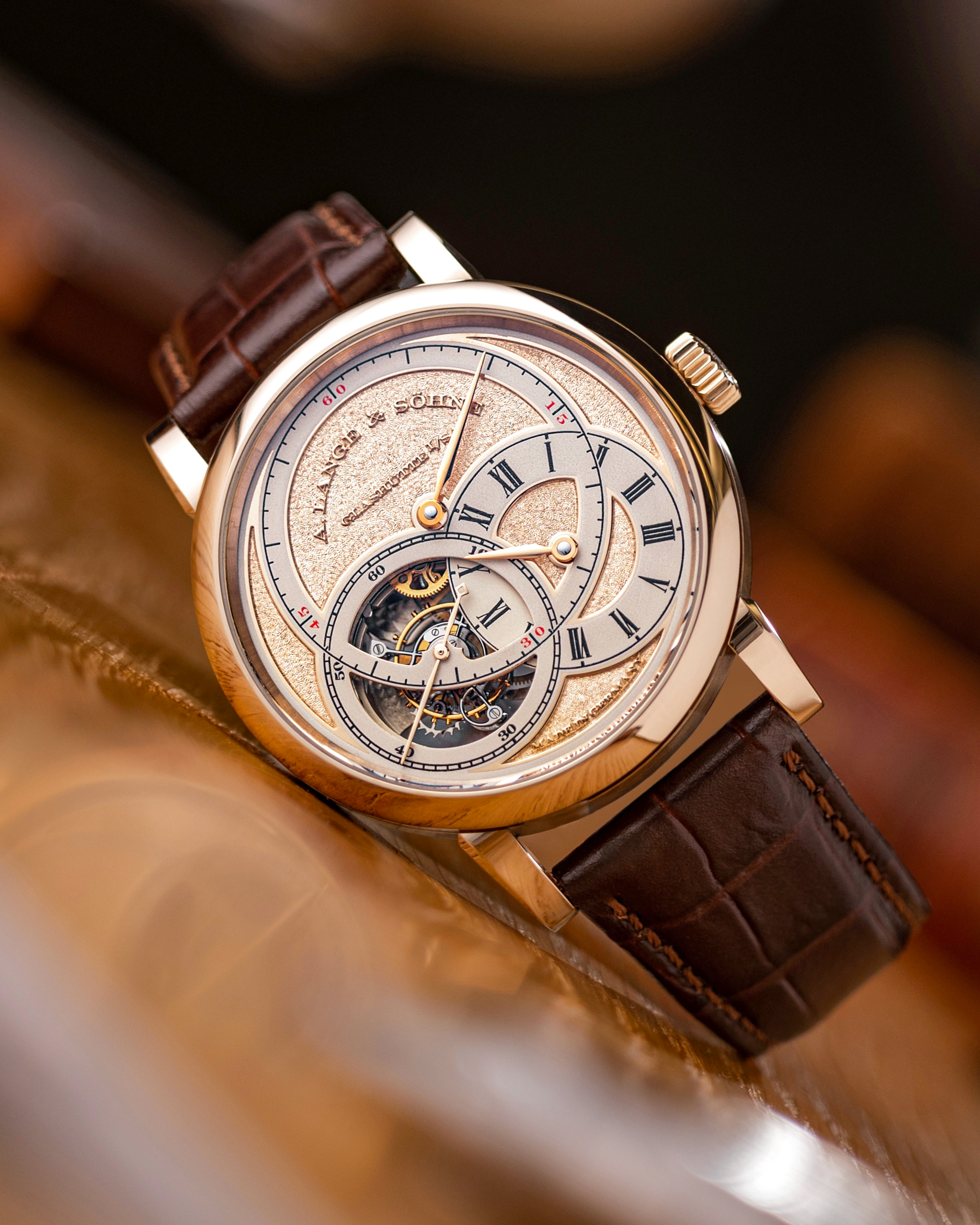
Nothing short of a masterpiece – Richard Lange Tourbillon “Pour le Mérite” Handwerkskunst
Tony: The Richard Lange family is still very much under the radar. Even the standard Richard Lange, still in our collection today. It’s a simple three-hand watch with central seconds.
Tom: Indirect-driven centre seconds, if I recall.
Tony: Yes, indirectly driven with an additional bridge on top of the three-quarter plate yes. The base movement is strong and robust so we enhanced it with the indirect-seconds mechanism on top that makes it more interesting and unique. Very dressy and elegant, it’s perfect!
-FIN-
